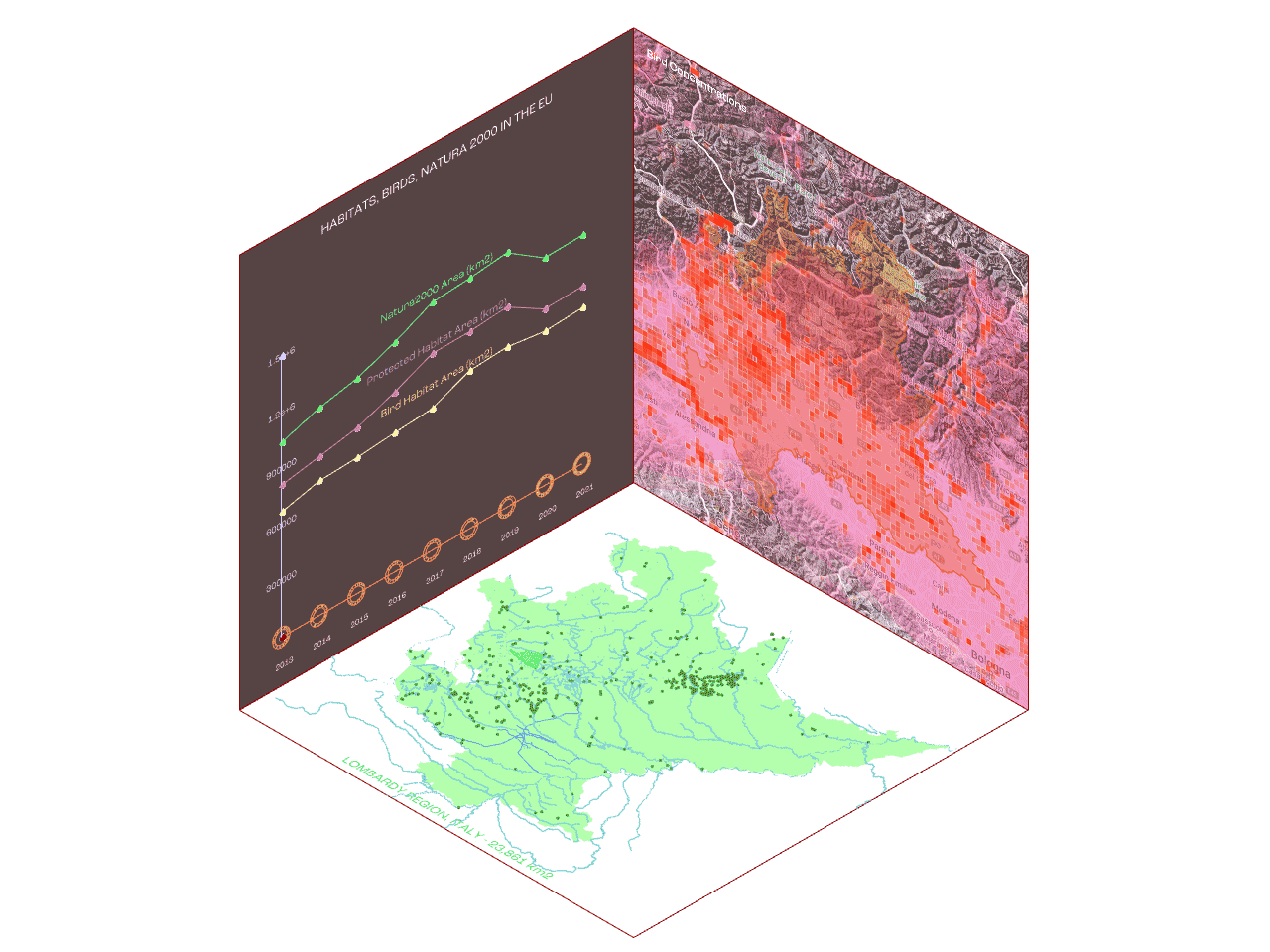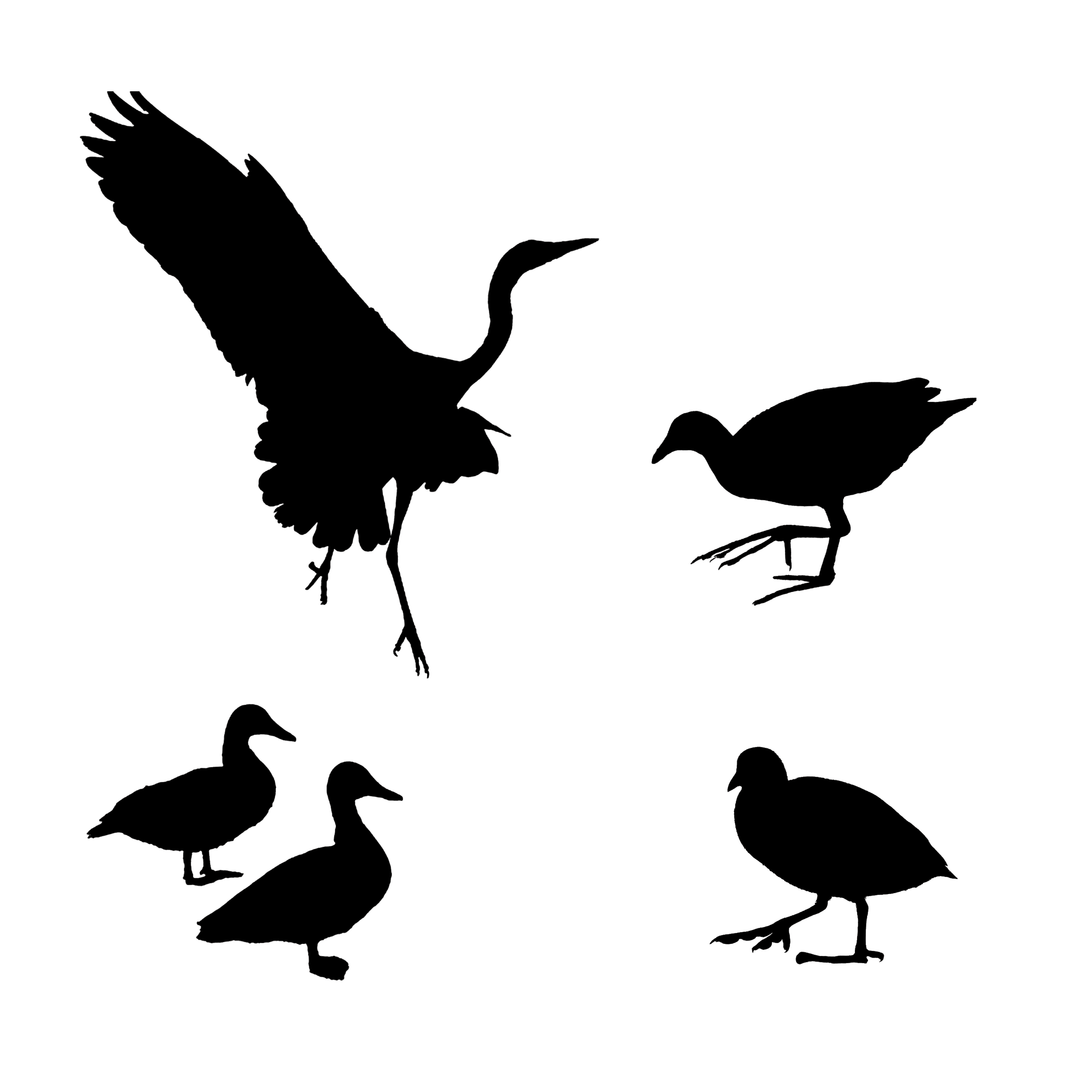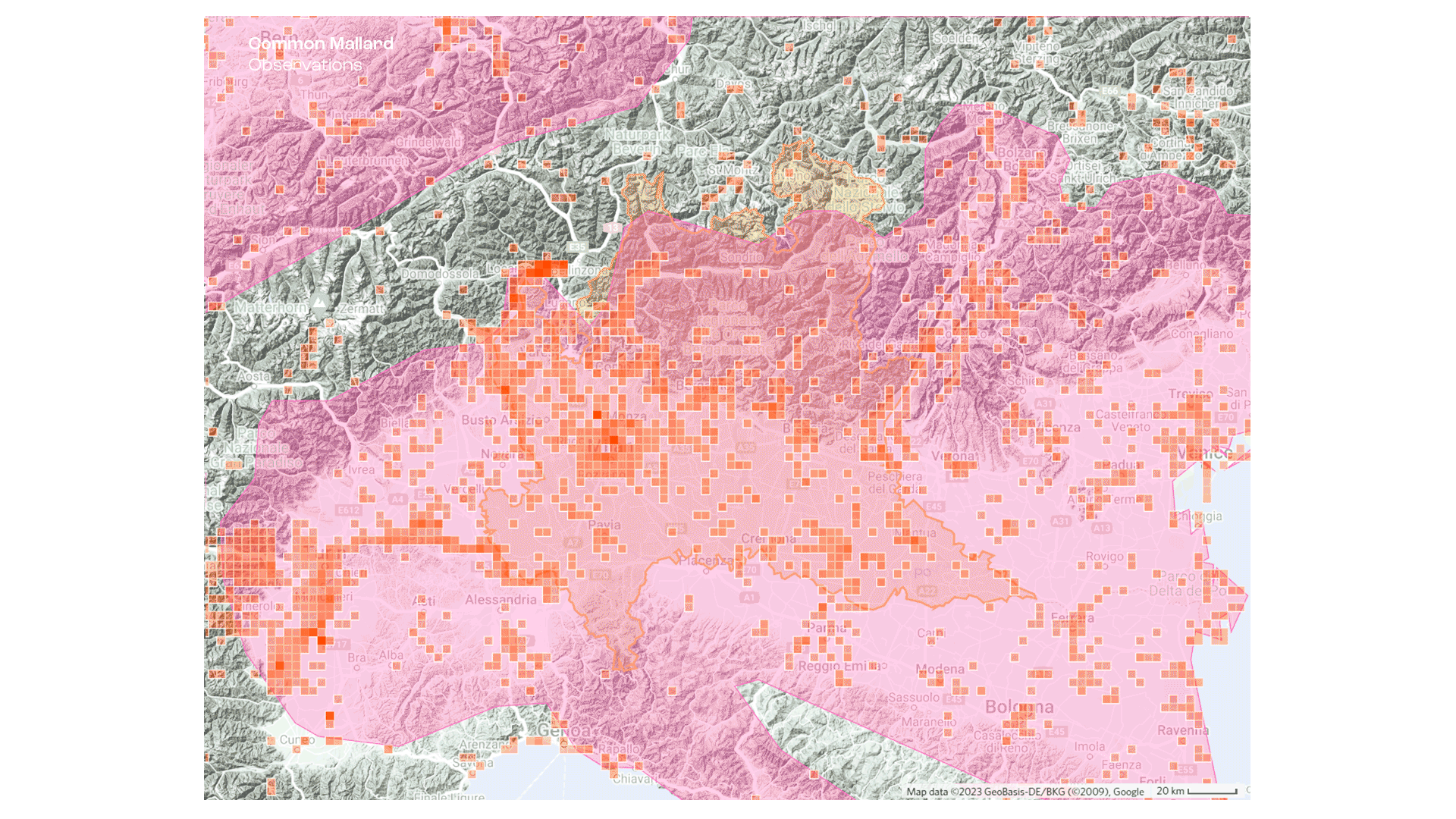Introduction
The project “Sprouting Habitats” investigates the impact of ecological conservation sites, particularly in the context of waterbirds. As most living organisms on earth, birds heavily rely on water and its associated habitats, such as wetlands, to support crucial phases of their life cycle, including migration, breeding, and wintering. Unfortunately, human activities like intensive agriculture, rapid urbanization, development, pollution, and climate change pose significant threats to these ecosystems, endangering the living organisms dependent on them.

The research aimed to evaluate the connection between forested areas and waterbird populations within the Lombardy region. To display protected ecological capacities of a landscape area, the data collected from of a bird-watching platform was cross referenced with existing Natura 2000 locations within the Lombardy region. This data was used to identify potential areas for habitat growth and remediation. The design interventions would then be determined by the findings in relation hydrology flows, vegetation, existing wetlands, and nesting patterns. Through this exploration, “Sprouting Habitats” seeks to contribute valuable insights through mapping the interconnectedness of bird species, protected habitats, and the broader ecological indicators of health within the region.

SIDE A: Habitat Conservation Networks within the EU
Through the research of Lombardy’s protected habitats, the Natura 2000 framework was a found to be a point of reference for over 200 areas of protected habitats for ecologcial life. The Natura 2000 is a cornerstone of the European Union’s biodiversity strategy, with network of sites spanning over 1, 500, 000 km². With its inception in 1992, Natura 2000 aims to preserve Europe’s crucial species and habitats, consistently expanding its reach. However, the chart revealed a reduction in the Natura 2000 area in 2020, following the United Kingdom’s withdrawal from the EU. As of 2021, around 27,000 Natura 2000 sites covered 18.6% of the EU’s land area and 9% of its marine territory.
Next, the Protected Habitats Area charts the Habitats Directive over time. The legislation is aimed at the conservation of natural habitats and wild fauna and flora. The Habitats Directive is a cornerstone of EU biodiversity policy and plays a crucial role in preserving and protecting Europe’s natural heritage. It aims to strike a balance between human activities and the conservation of biodiversity, promoting sustainable development and the long-term health of ecosystems.
Finally, the Bird Directive areas follow the same linear trend, reaching over 800,000km² in all of the EU. The Bird Directive is a key piece of legislation within the European Union (EU) aimed at the conservation of wild birds and their habitats.
Protected habitats under act as vital sanctuaries and preserving biodiversity. The habitats act as strongholds for a diverse array of species and ecosystems, contributing to the broader goals of ecological sustainability and environmental conservation.

SIDE B: Protected Habitat Directive on a Regional Scale
A regional exploration within Lombardy’s diverse ecosystems host protected sites aimed at preserving unique flora and fauna. Forest areas, depicted as green nodes at the cube’s base, which offer rich ecosystems for migratory species like water-faring birds. The grids shown were in correlation with bird sighting concentrations, and through the mapping exercise, it became evident that the areas of high forest concentration do not necessary correlate with the prevlance of these specific bird species. A purple hatch represents the higher density- located near existing protected forest areas and orange hatch correlates with the areas without dense forested areas. A conclusion drawn from the pattern than emerged upon mapping the co-relation, which was that these specific waterbirds are deterred by densely forested areas due to potential predators that may inhabit these areas. However, waterbirds are a diverse group, and their habitat preferences depend on factors such as species, life stage, and ecological niche. While many waterbirds are associated with aquatic environments, some species, particularly during nesting, may exhibit a preference for forested areas.

SIDE C: Birds as Bio-indicators
Protected habitats correlate with more than human species, flora, and fauna. The sampled waterbirds, were selected based on their varied attributes, yet high frequency of sightings within the administrative region of Lombardy. These water birds included the Common Moorhen (Gallinula chloropus), Common Mallard (Anas platyrhynchos), Eurasian Coot (Fulica atra), and Grey Heron(Ardea cinerea).


Among the listed birds:
Common Moorhen (Gallinula chloropus): Migratory Status: Common Moorhens are generally considered sedentary or partially migratory. While some populations are resident year-round, others may undertake seasonal migrations in response to changing environmental conditions.
Common Mallard (Anas platyrhynchos): Migratory Status: Common Mallards are highly migratory birds. They breed in northern regions and migrate southward during the winter. However, in some areas with mild climates, they may reside year-round.
Grey Heron (Ardea cinerea): Migratory Status: Grey Herons are often considered partially migratory. While some individuals may remain in their breeding areas year-round, others may undertake seasonal movements, especially in response to changing food availability and weather conditions.
Eurasian Coot (Fulica atra): Migratory Status: Eurasian Coots are known to be partially migratory. They may migrate in response to environmental factors such as food availability and weather conditions. However, in milder climates, some populations may remain resident throughout the year.
Bird Species Selected for Cross-Referencing Concentrations
The bird concentrations were collected from the citizen scientist app iNaturalista, and as such, are observed as the densest red cells on the map, which will be the nodal points of our migratory bioindicators. This analysis, evaluating the correlation between protected habitats and waterbirds revealled w. It visually represented intersections between thriving ecosystems and designated conservation areas.

Sites with Potential for Water Remediation and Ecological Preservation
Cross-referencing protected zones with existing forested regions revealed insights into the migratory patterns of water-faring birds, hinting at potential site remediations beyond protected zones.
Conclusion
Sprouting Habitats, began as a computational design project focused on water quality, but evolved into an investigation of bird migratory patterns as indicators of ecological vitality. Some of the key takeaways include; the importance of defining an habitat conservation framework, understanding nature’s hydrology and forested areas for mapping regional scale terrain. The technology of mapping expansive areas requires large bandwidths and limitations in regard to detail. Exploring habitat growth capacities through ecological site interventions is essential to develop a sustainable toolkit for area development. By cross-referencing protected zones with existing forested regions, insights are revealed into the migratory patterns of water-faring birds. This illuminates potential site remediations beyond protected zones. It urges us to extend protection beyond designated zones, navigating the balance between human progress and ecological preservation in Lombardy and beyond.

